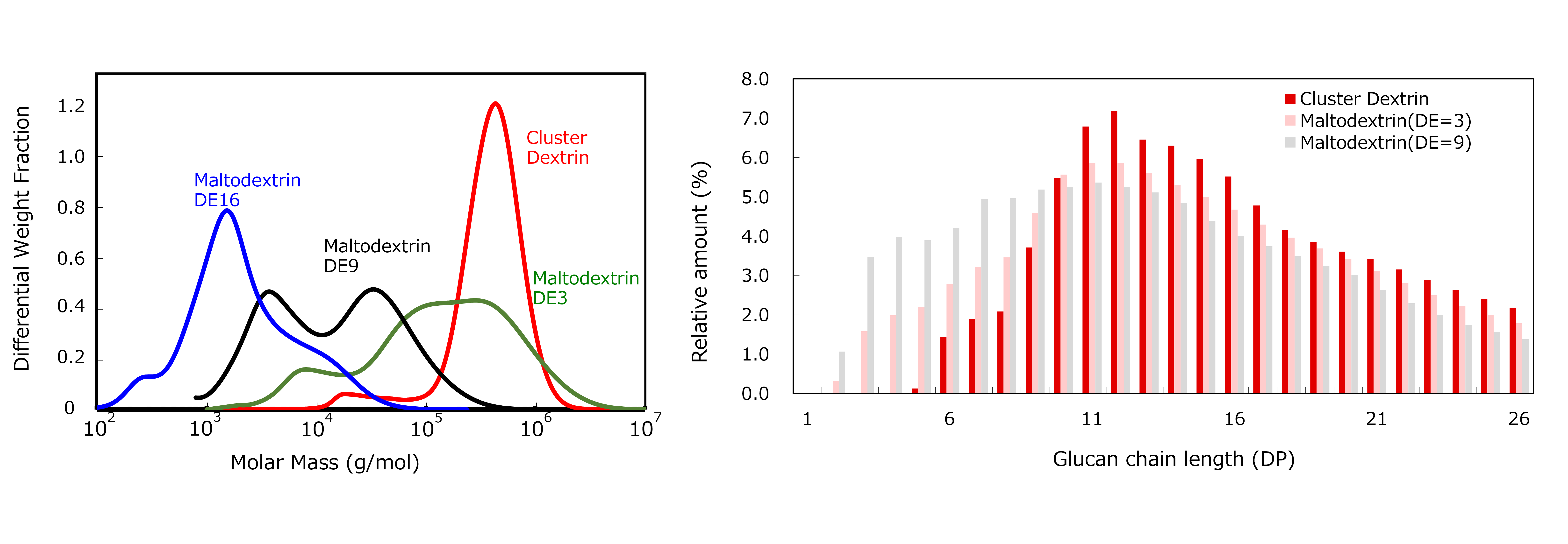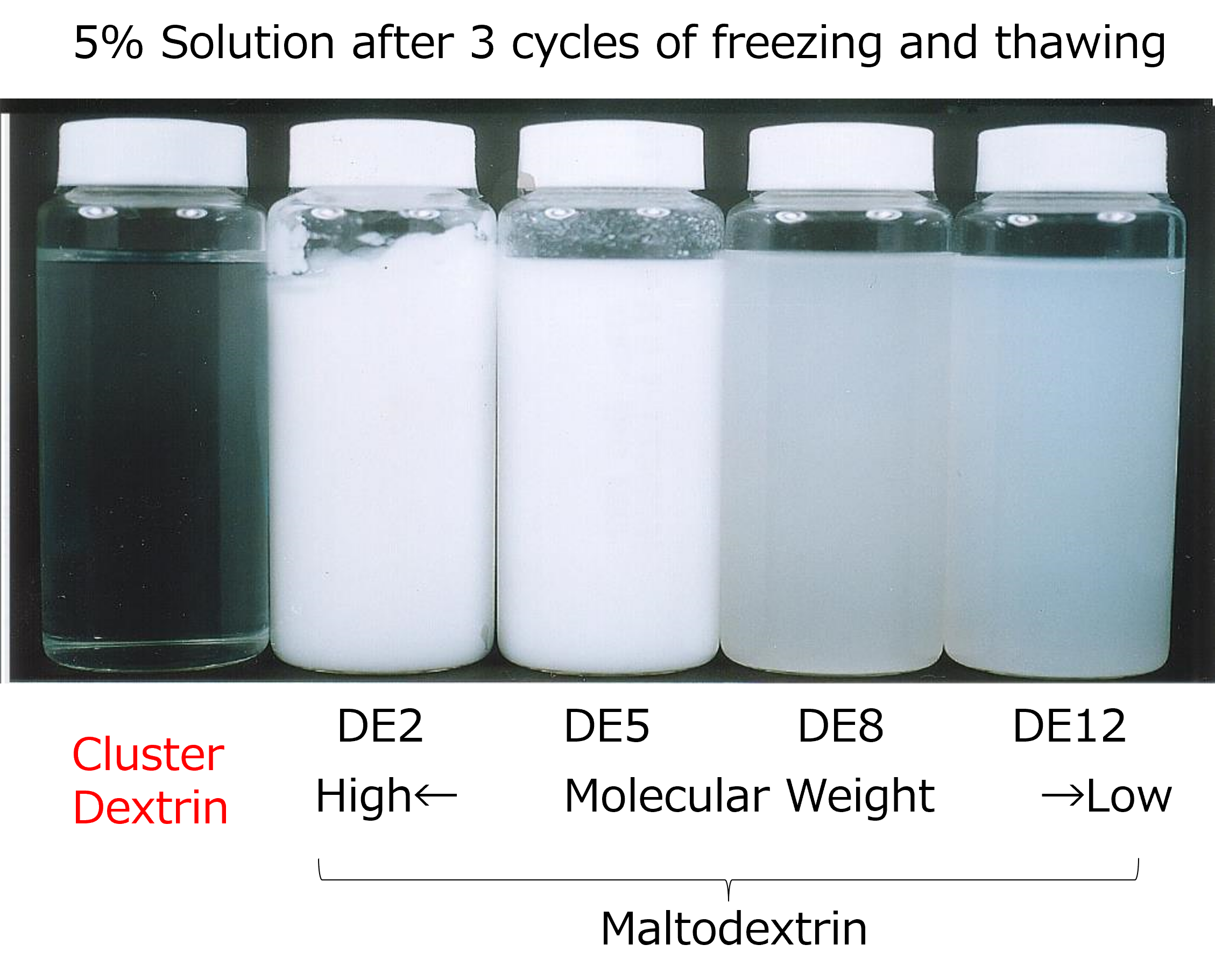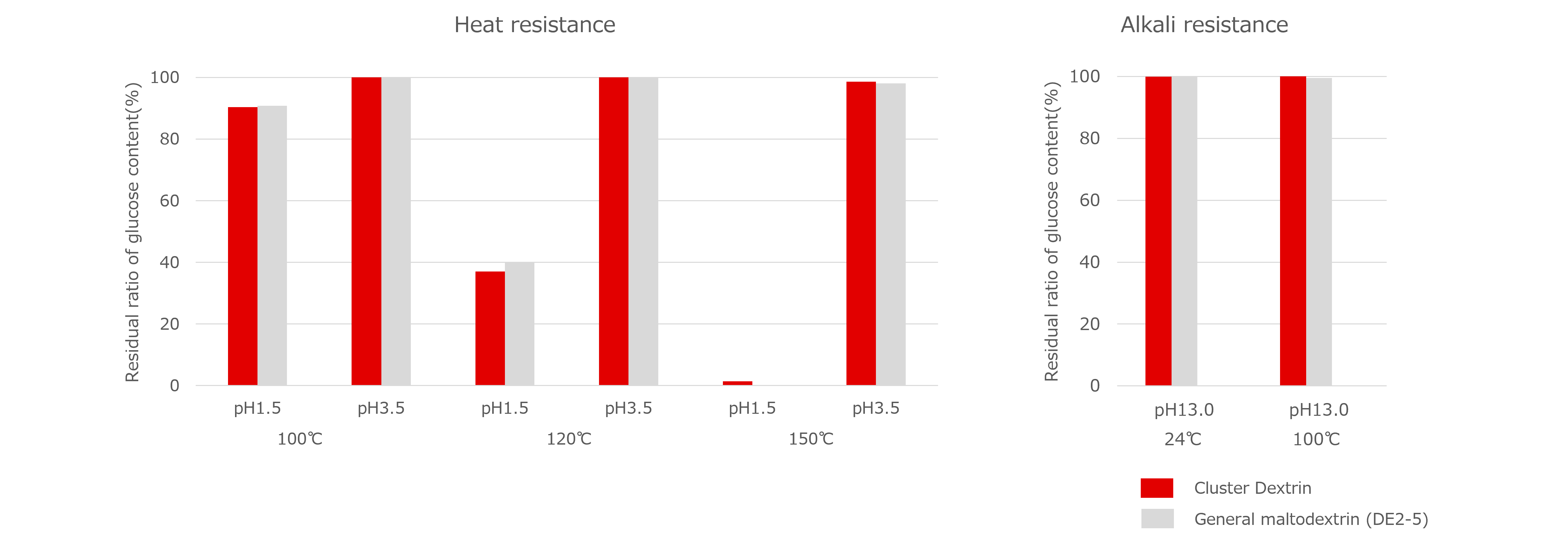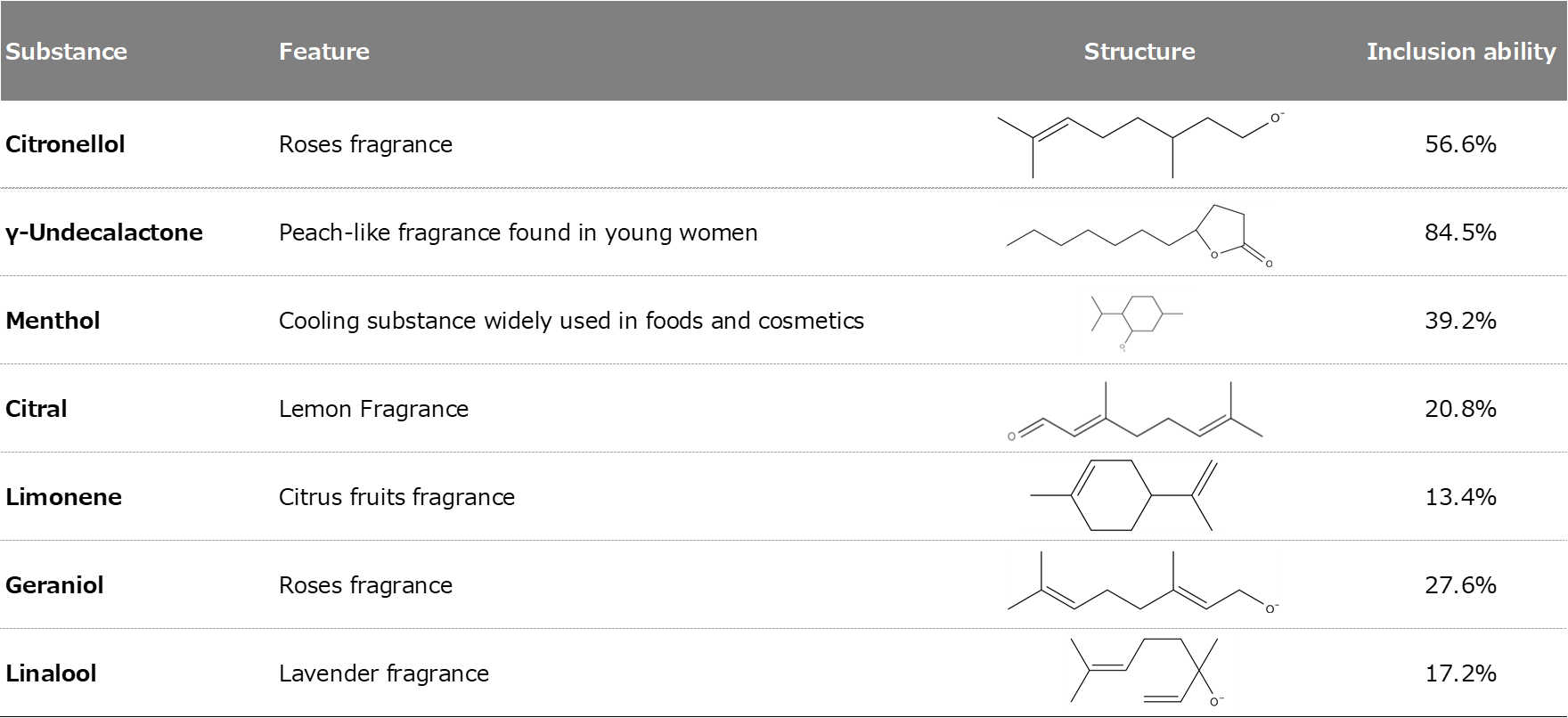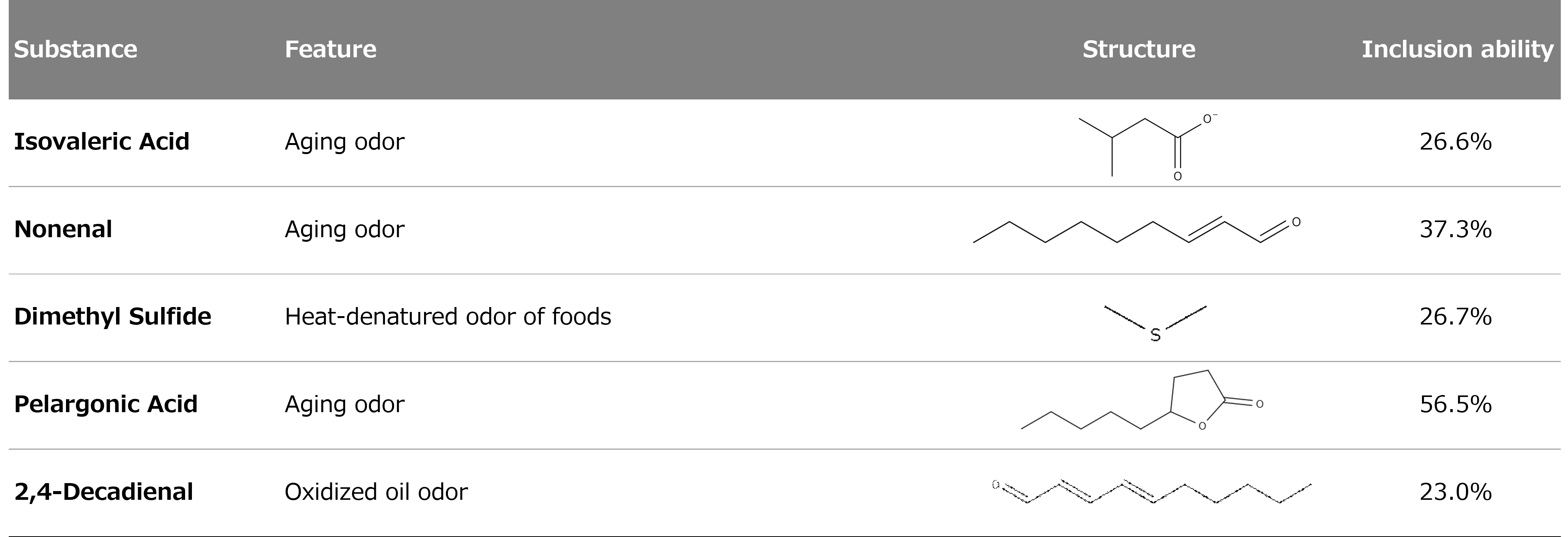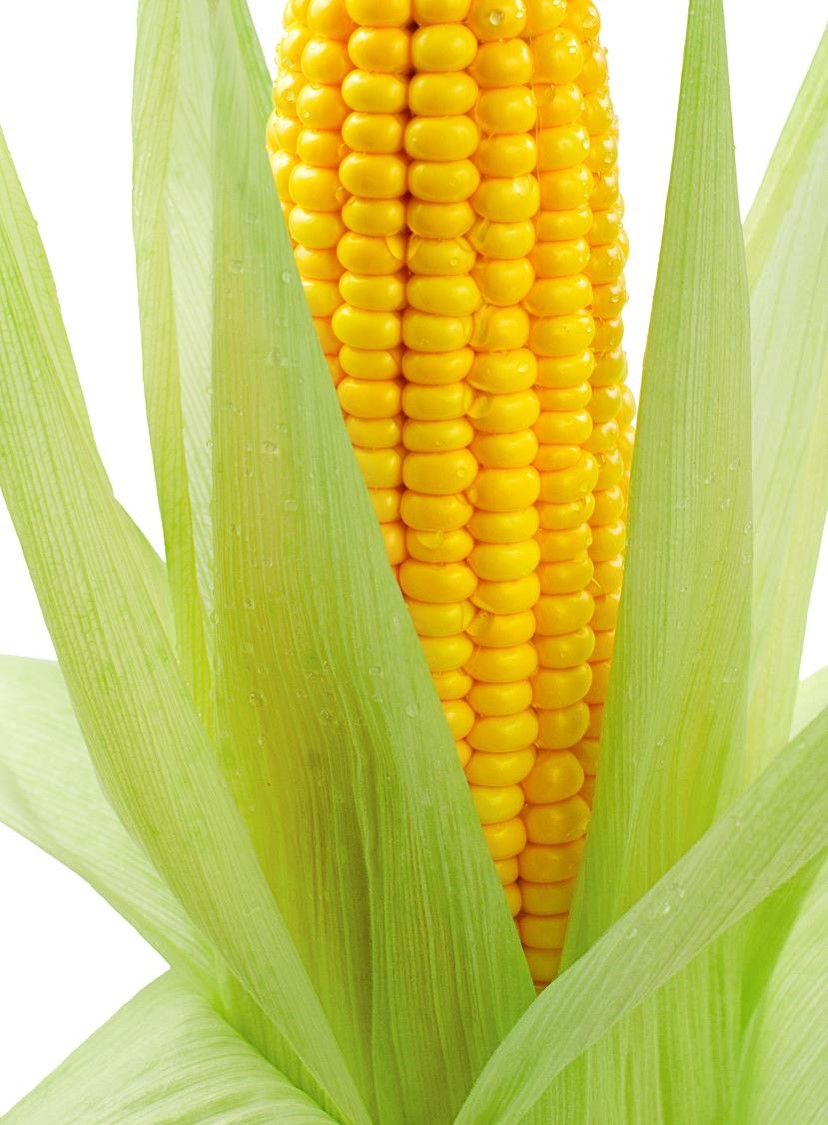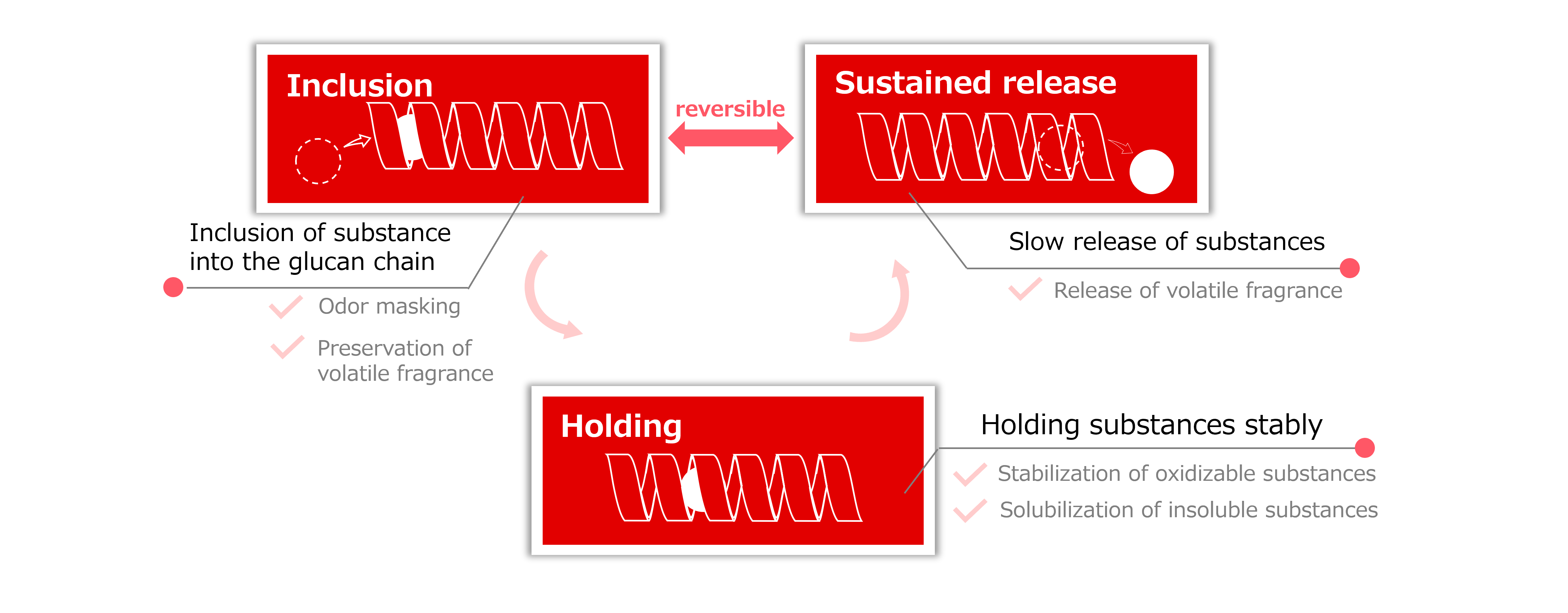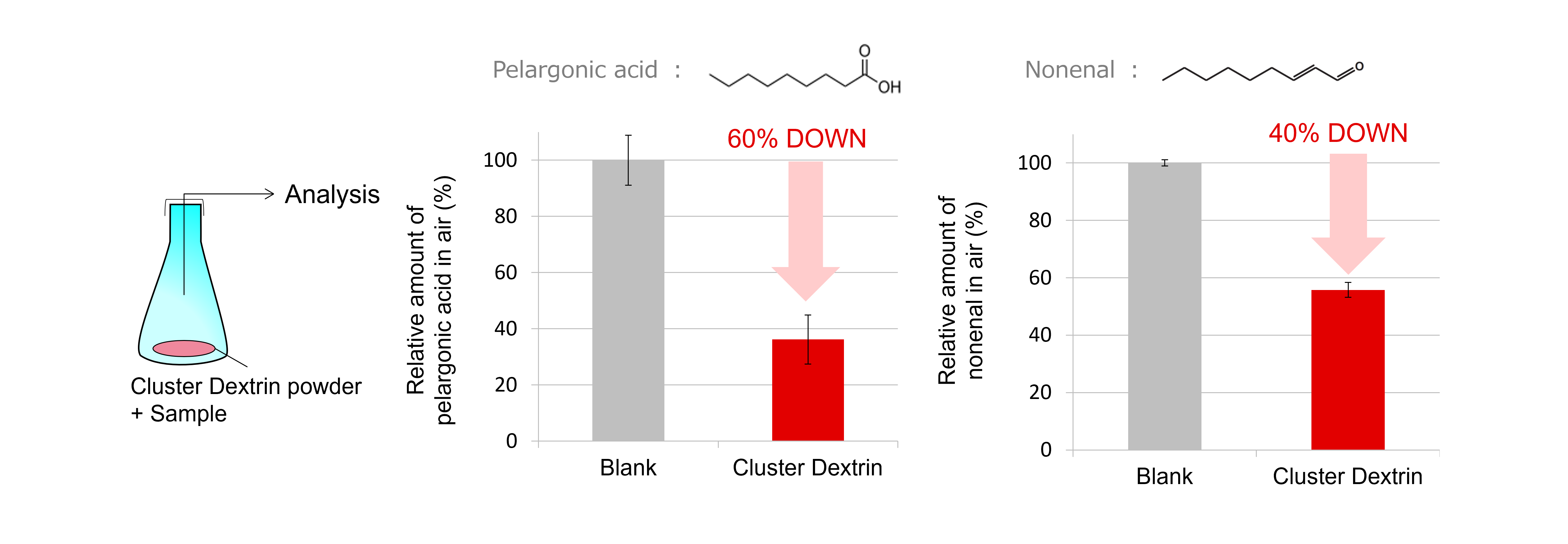Cluster Dextrin™ < Cosmetic Ingredient >
Properties
1. What is Cluster Dextrin?
Cluster Dextrin, also known as Highly Branched Cyclic Dextrin, was developed by the Glico Group for the first time in the world.
Cluster dextrin is a maltodextrin that is manufactured from waxy cornstarch and is from amylopectin through a cyclic reaction involving the use of branching enzymes, thus has a structure different from general maltodextrins.
Therefore, Cluster Dextrin maintains the cluster structure that constitutes the basic structural unit of amylopectin.
Cluster Dextrin has been confirmed to have various functions and effects, and it is used for a wide range of purposes, such as in foods, cosmetics, and daily items.
2. Maltodextrin with high molecular weight and narrow molecular weight distribution
Due to the high specificity of the branching enzyme, Cluster Dextrin has a narrow molecular weight distribution and high molecular weight maltodextrins with long chain lengths.
3. High water solubility and high solution stability
Although Cluster Dextrin is a maltodextrin with a high molecular weight, it is highly soluble in water. A solution of Cluster Dextrin has high stability compared to that of other maltodextrins with a different Dextrose Equivalent.
Furthermore, its acid resistance, alkali resistance, and heat resistance are equivalent to other maltodextrins.
4. Low unpleasant odor (starch-like odor)
Cluster Dextrin has high purity and hardly contains any starch-like substances, so its levels of unpleasant odor are extremely low.
5. Inclusion effect by helical structure forms
Cluster Dextrin has branched long chains, which form helical structures.
The interior of helical structures are hydrophobic and can form inclusion complexes with guest molecules. Therefore, Cluster Dextrin can hold and release guest materials depending on the environment. Some of the effects that can be expected are stable retention of fragrance, reduction of unpleasant odor or irritancy, and stabilization of unstable materials.
Example of includable materials
Here are some of the tested guest materials with which Cluster Dextrin can form inclusion complexes.
Characteristics
- Trade name: CLUSTER DEXTRIN
- INCI name: MALTODEXTRIN
- Corresponding to Chinese INCI name
- Kosher certified and Halal certified
- Highly Branched Cyclic Maltodextrin manufactured from waxy cornstarch
- High molecular weight, narrow molecular weight distribution, and structured in branched chains
- High water solubility and high solution stability
- Inclusion complex formulation by helical structure (Inclusion, Release, and Retention)
Cluster Dextrin is sold as a food ingredient.
Functionality
Functions of Cluster Dextrin
* Inclusion: Inclusion of substance into the glucan chain
/ Odor masking, Preservation of volatile fragrance
* Sustained release: Slow release of substances
/ Release of volatile fragrance
* Holding: Holding substances stably
/ Stabilization of oxidizable substances
/ Solubilization of insoluble substances
* Powder fluidity and storage stability as a base agent for powderization
/ Cluster Dextrin has high molecular weight and narrow molecular weight distribution, and the coverability is high.
/ Cluster Dextrin has low unpleasant odor (starch-like odor), so it does less affect the odor of the final products.
◆Inclusion of age-related odorants
The flasks with and without Cluster Dextrin were filled with pelargonic acid (a 30s age-related odorant) or nonenal (a 40s age-related odorant), respectively. After covering the flasks with a lid and letting them sit for a period of time, the amount of each odorant that had vaporized in the flasks was measured by gas chromatography.
The results showed that these odors were reduced in the flasks containing Cluster Dextrin compared to the control.
This result suggests that with the inclusion function of Cluster Dextrin, it can be expected to be effective in eliminating aging odors.
◆Preservation of volatile fragrance
Citronellol, which gives off the scent of roses, was added to water or a solution with 10% Cluster Dextrin added to make a final concentration of 0.01%. After keeping the solution at 40°C for a specified time, the amount of citronellol was measured by gas chromatography.
The Cluster Dextrin solution showed less change in fragrance intensity over time compared to water, suggesting a slow release of citronellol.
This results suggest that in liquid applications, the sustained release function of Cluster Dextrins can be expected to maintain fragrance.
◆Release of volatile fragrance
Hair milks containing Cluster Dextrin (0%, 1%, and 5%) and 0.5% of γ-undecalactone, which gives a refreshing peach scent, were prepared. After applying to hair, it was dried with a hair dryer and stored at room temperature for one day, then the γ-undecalactone content was measured by gas chromatography.
The results showed that the higher the concentration of Cluster Dextrin, the smaller the change in fragrance intensity.
On the other hand, when water was added to this hair, the higher the concentration of Cluster Dextrin, the stronger the intensity of the fragrance, thus confirming that fragrance is released by moisture.
These results suggest that under milk-based conditions, the sustained release function of Cluster Dextrin can be expected to maintain fragrance, and that moisture, such as perspiration, can release fragrance.
◆Holding of volatile fragrance
Powdered fragrance was prepared by adding 25 mL of 0.5% citronellol solution to 250 g of Cluster Dextrin or general maltodextrin (DE 18), then after stirring for 1 minute, drying at 110°C for 7.5 hours. Each powder sample was measured for citronellol content by gas chromatography, and no fragrance was detected in either sample.
On the other hand, when water was added to each powdered fragrance and measured in the same way, a strong fragrance was detected only in that with Cluster Dextrin.
These results suggest that in powder applications, the holding function and the sustained release function of Cluster Dextrin can be expected to control the retention and release of fragrance.
◆Powder fluidity and storage stability as a base agent for powderization
Powdered fragrances of citronellol were prepared using Cluster Dextrin and general maltodextrin (DE 18), and these were tested stored at 25°C and 50% humidity.
As a result, it was confirmed that the powdered flavoring agent with Cluster Dextrin maintained its fluid state compared to general maltodextrin.
From the above, we know that Cluster Dextrin has better powder fluidity and storage stability compared to general maltodextrins.
Application examples
Cosmetic
Skin care cosmetics, hair care products, perfumes, powdered shampoos, soaps, etc.
Daily items
Deodorants, bath salts, antiperspirants, body sheets, etc.
Contact Us
| for enquiries, contact | Global Sales Department, Technical Sales Division, Glico Nutrition Co., Ltd. 4-6-5, Utajima, Nishiyodogawa-ku, Osaka 555-8502 Japan E-MAIL: g-ingredients@glico.com * When you contact us, please let us know your name, company and country in the message. |



